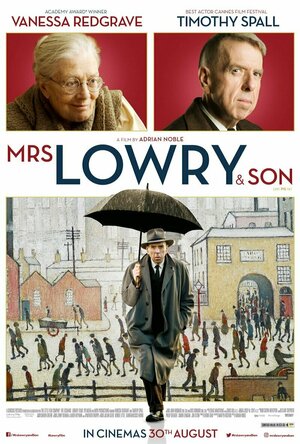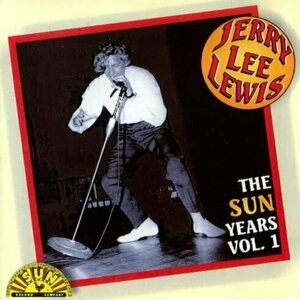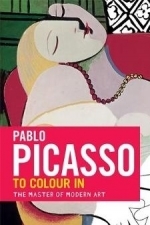
The Silent Age
Games and Entertainment
App
Episode Two now available, the final chapter in this award winning adventure. The Silent Age takes...

EGW Writings 2
Reference and Book
App
EGW Writings application enables you to read and search the complete published writings of Ellen G....

EGW Writings
Reference and Book
App
EGW Writings application enables you to read and search the complete published writings of Ellen G....
After being out of print for sixty years, <i>Ilsa</i>, one of Madeleine L’Engle’s first novels has been republished, giving readers the chance to discover the rare, little known story. L’Engle is recognized as the author of <i>A Wrinkle in Time</i> and a selection of young adult novels, however <i>Ilsa</i> is an example of L’Engle’s ability to pen a much darker story.
Fundamentally a love story, <i>Ilsa</i> is set in America during the first half of the 1900s. Whilst this gives it an historical context to current readers, it would have been the present day when the story was originally published. The narrator, Henry Porcher, first meets the titular character at the age of ten, shortly before his family whisks him away to temporary accommodation many miles away. In this brief introduction, Henry falls in love with Isla, despite her being three years older than him. From this point on, Henry’s mind and heart are filled with thoughts about Ilsa, and is saddened that his family possess antagonistic opinions about her and her father.
Henry and Ilsa come from entirely different backgrounds. The Porcher’s are a large family with an air of superiority, a stark contrast to the humble lodgings of Ilsa and her naturalist father, Dr. Brandes. Whilst Henry’s parents look down on Dr. Brandes, Ilsa views the Porcher’s as rich and biggity. Yet, Henry and Ilsa are happy to be friends – a <i>Romeo and Juliet</i>-esque relationship, unfortunately with romantic attraction only falling on one side.
Despite his hopes, Henry realizes that Ilsa will never be his. By the age of twenty-four, he already feels like a failure, yet he continues to shadow and worship Ilsa without a care to how his life turns out. Henry painstakingly witnesses Ilsa’s transformation from girl to woman, marrying a man who does not deserve her, becoming a mother, a widow, and finally suffering health wise. Forfeiting his chance of career and marriage, Henry experiences the darker side of love, and pays the price of unrequited love.
For a story about love,<i> Ilsa </i>contains no romance or passionate scenes, and once Henry loses his childhood naivety, it begins to become rather dull. The reader will initially anticipate a happy ending, but the lack of a climax reveals that this will not be forthcoming. <i>Ilsa</i> is far more interesting at the beginning of the novel, a time when anything could happen, but becomes increasingly disheartening as it goes along.
Having not read the celebrate author before, I have no idea how <i>Ilsa</i> compares to the more popular of L’Engle’s novels. Personally, I am not impelled to seek out any of her other books, however that does not mean I deem<i> Ilsa</i> terrible. For fans of L’Engle, this book is certainly worth seeking out, particularly this edition, which contains a brief biography and selection of photographs of the author throughout her life.
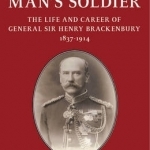
The Thinking Man's Soldier: The Life and Career of General Sir Henry Brackenbury 1837-1914
Book
Sir Henry Brackenbury is a now largely forgotten but extremely important soldier, writer, and...
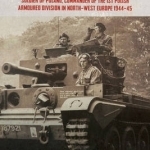
Man of Steel and Honour: General Stanislaw Maczek: Soldier of Poland, Commander of the 1st Polish Armoured Division in North-West Europe 1944-45
Book
This is a biography of one of the most undervalued commanders of the Second World War, General...
Emma @ The Movies (1786 KP) rated Mrs Lowry & Son (2019) in Movies
Jun 20, 2020
Lowry's life revolves around his mother, he cooks for her and keeps her company, but nothing he does seems to be good enough. Her life isn't what she'd like at all, her husband left them with debts and they're living in a neighbourhood that's beneath her and she's clinging to the things that are "better" in the world. He son's hobby of painting isn't to her liking especially after a critic pans a piece he submits. Lowry has one thing to cling to in life but his mother is a fickle person and it may be that nothing is ever enough to her.
The majority of the film is made up of scenes around Lowry and his mother, even at only 1 hour 31 minutes that's a lot of time with limited cast. Both leads are impressive actors and there's no denying that you can see it in this movie but there's something lacking. The story wasn't going to be an overly exciting one and was going to rely on its dramatic performances to keep your interest, everything was "nearly but not quite". You expect some moving moments and at several points you think "oh it's coming now" but it always seems to peter off before the pay-off.
That's not to say that the acting isn't good, it is, but all the scenes were just moments short of something special. Spall does get a few opportunities that get you choked up for him, but as I say, there was opportunity for much more.
It's an intriguing story of the way love for family can dictate the way your life goes. The dynamic between the two is toxic and Lowry's battle between getting his mother's approval and doing what he wants is a powerful one... that this film doesn't quite manage to capture.
What this film does do beautifully is the portrayal of Lowry's paintings. I'm not an expert on his work but it was easy to spot where the scenes had been framed to reflect a piece, you get a chance to see the comparisons briefly at the end of the film. The colours throughout are also spot on for his pieces and the whole film has a very effective range in that respect.
The picturesque doesn't make up for the way the rest of the film cuts off moment in their prime, while I knew it probably wasn't going to hit the high star ratings I had hoped for something above average considering the cast. It sadly didn't deliver and to add even more disappointment it was ended with what I can only describe as a BBC ending to a partially dramatised biography and well, that just put the final nail in the coffin for me.
Originally posted on: https://emmaatthemovies.blogspot.com/2019/09/mrs-lowry-son-movie-review.html
Kurt Vile recommended The Sun Years by Jerry Lee Lewis in Music (curated)
Hazel (1853 KP) rated Picasso: The Colouring Book in Books
Jul 15, 2017
...
Pablo Picasso: To Colour In was published in April 2016 with the intention of using the popular fad to educate readers/colouring book enthusiasts about the techniques and secrets of the great master. Each work included in the book has a brief paragraph explaining what it is (in case you cannot tell) and a few details about Picasso’s intentions or the events happening in his life at the time.
...
Naturally, it would be impossible to produce a book of all Picasso’s recorded works, but the editors of this particular colouring book have carefully selected examples that span the majority of his life, thus encompassing the different styles he experimented with.
The author of the text – presumably Frédérique Cassegrain, who also wrote the biography and information for each included artwork – gives helpful advice about how to colour in the outlined versions of Picasso’s paintings. The paper is thick enough to be suitable for paints, particular Gouache, which is water soluble and easily blended. Alternatively, coloured pencils may be used, preferably of artistic quality, which may be more suitable for those less confident in art and design. Another option, although not mentioned by the author, are felt-tip pens. Usually, these should be avoided due to ink bleeding through the page, however, the paper is single sided, so there is no chance of damaging the following colouring page in the book.
Purchasing Pablo Picasso: To Colour In and completing the book, provides not only hours of fun and relaxation, but an opportunity to discover and understand the artist. Unlike at a gallery where the brain may switch off, being able to go away and return to the book gives us time to absorb the information and concentrate more clearly on the details of each painting.
Opposite each colouring page is a copy of the original in full colour, meaning that, if one desired, one could replicate Picasso’s work as closely as possible. By doing, rather than just looking, we begin to understand the colour choices, piece together the geometric shapes to form an image and begin to understand the thought processes of the artist.
Interestingly, there are two paintings that stand out amongst all the others. These were produced during and after the First World War, a time when Picasso returned to a more classical style of artwork. These are The Pipes of Pan (1923) and The Bathers (1918). Both show a completely different side to Picasso and would not immediately be recognised as his own work. Despite not being entirely life-like, there are no elements of Cubism or Surrealism and the colour palette is altogether natural. Picasso has focused on shading and tone to create a realistic appearance, a contrast to the flattened portraits he is known for.
...
Pablo Picasso: To Colour In will appeal to artists, art historians and other creatives with its contrast of light relief and in-depth knowledge. The book is available online at retailers such as Amazon and The Book Depository from approximately £6. If Picasso is not your thing, there are other artists available in the series of colouring books, including Klimt, Hokusai (Japanese Art), Monet, Van Gogh, Caillebotte and Manet (Impressionists), and Paul Klee. Whatever your preference, prepare to learn whilst you are relaxing and having fun.
Rachel King (13 KP) rated Blue in Books
Feb 11, 2019
What I could not predict was how absolutely fascinating the world of Tamarisk is. I actually thought about researching all of the made-up names of the plants, animals, and geology before I completely realized the depth of creativity to which Becky and her father Chris went in the creation of this fantasy world. What began as a coping mechanism for a young child going through the rigors of chemotherapy became a world in an alternate universe that existed with its own laws of physics. I was completely enthralled by this unbelievable world of blue foliage, black dirt, microfarming, moldable crystal, smelling of chocolate and raspberries, and featuring transportation in the form of giant flying birds - and that is only the beginning of all that this world holds to tantalize the senses and ignite the imagination. Becky's voyages into Tamarisk alone are enough to fill countless children's stories that would hold any grown adult rapt with wonder.
On the alternate side of this fantastic world is the grievous reality of the ongoing feud between Chris and Polly, Becky's divorced parents. Even though Polly has remarried, she still harbors intensely negative feelings towards Chris. In addition, Chris's whole life is about finding ways to connect with Becky better, as the reader watches him fail at blind date after blind date. Becky wants so badly to hang onto her life that she lives in denial of her increasingly-severe symptoms. My heart went out to all of the characters at different points as I connected with the different emotions and situations. As a mother, I can not even fathom one of my children going through the horrors of childhood cancer, and as a wife, the thought of abandoning my spouse is inconceivable, especially during such a difficult time. My heart broke for Becky's best friend Lonnie, and I felt the awkward sadness of Becky's stepfather Al. These characters are as real as if this story were not fiction, but a memoir or biography.
I could not help noticing the parallels between belief in Tamarisk and the beliefs of Christianity. Polly either could not or would not believe in Tamarisk, and many of her arguments against it matched the common ones against a belief in the existence of God and Heaven.
The ending was bittersweet, but light on bitter and rich on sweet. I shed a tear, but Chris's perspective was very fitting for how I felt about this conclusion. This was a very, very good read that would enrich any reader's book collection. What I gained from this book will stick with me for a long time to come.

